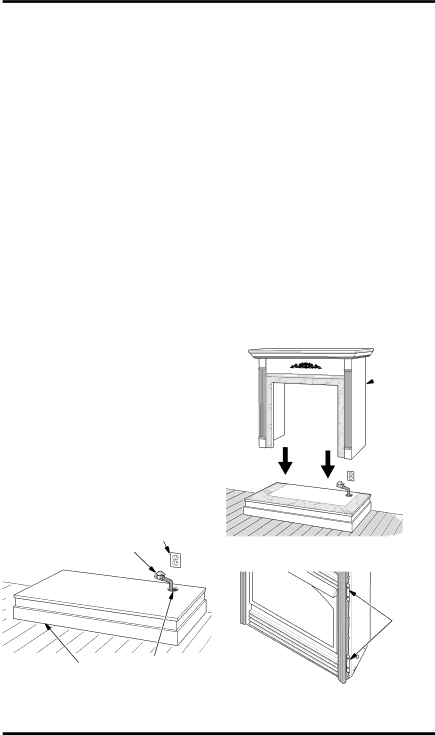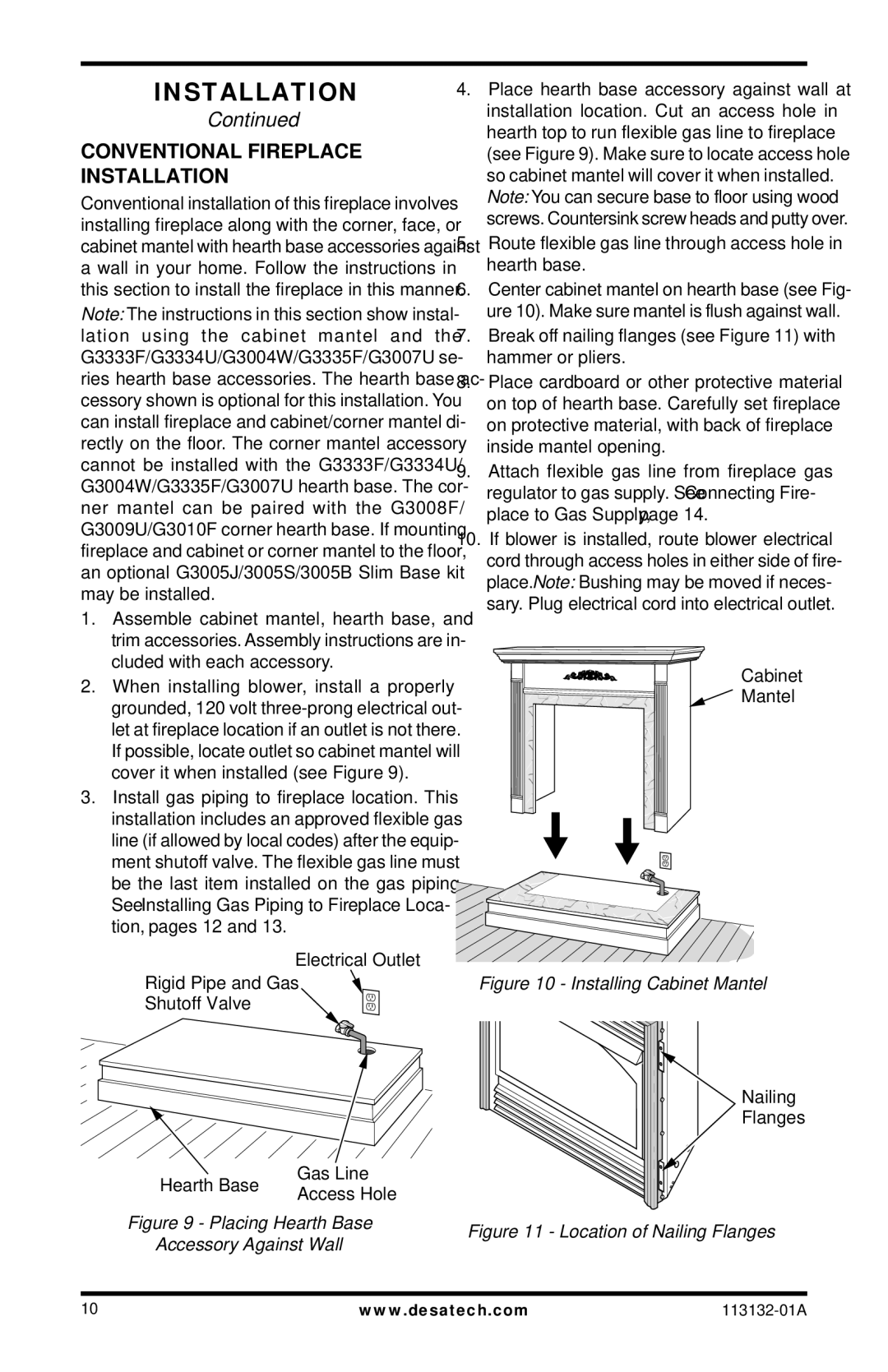VSGF33PRB, EFS33PRB, VSGF33NRB, EFS33NRB specifications
Desa EFS33PRB, VSGF33PRB, EFS33NRB, and VSGF33NRB are four highly regarded heating appliances known for their efficient performance and user-friendly features. Each of these models offers a unique set of characteristics, making them suitable for different heating needs and preferences.The Desa EFS33PRB is a prominent model designed with energy efficiency in mind. It utilizes advanced combustion technology that maximizes heat output while reducing fuel consumption. This model features a sleek, modern design complemented by a user-friendly control panel. The adjustable thermostat allows users to set their desired temperature easily, ensuring comfort throughout the space. Additionally, the EFS33PRB is equipped with an automatic shut-off mechanism for enhanced safety, providing peace of mind during usage.
On the other hand, the VSGF33PRB stands out with its high-velocity fan that ensures rapid and even heat distribution across larger areas. This model features a robust build quality and is designed to operate quietly, making it an excellent option for residential spaces where noise levels must be kept to a minimum. The VSGF33PRB also incorporates a range of settings for different heating needs, allowing users to customize their heating experience.
Moving to the EFS33NRB model, it emphasizes versatility with its multi-fuel capability. This appliance can efficiently utilize various fuel types, making it suitable for different environments and preferences. The EFS33NRB is designed with user convenience in mind, featuring easy maintenance capabilities, such as a removable ash pan for hassle-free cleaning. It also includes an electronic ignition system, ensuring quick and reliable startup every time.
Lastly, the VSGF33NRB shares many characteristics with its counterparts but enhances its appeal with an increased focus on eco-friendliness. This model is crafted to produce lower emissions, contributing positively to environmental sustainability. It boasts a high-efficiency rating, thus not only providing effective heating solutions but also reducing energy bills.
In summary, the Desa EFS33PRB, VSGF33PRB, EFS33NRB, and VSGF33NRB collectively represent a complete range of heating options suitable for various applications. Their dedication to efficiency, safety, and user convenience makes them desirable choices for consumers seeking reliable and innovative heating solutions. Whether it be through advanced technology, enhanced safety features, or eco-friendly capabilities, these models stand out in the competitive market of heating appliances.

